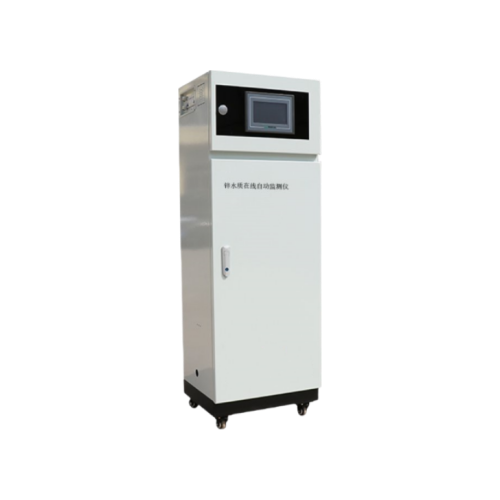
Zn
Contact Now
This product adopts zinc reagent spectrophotometry. After the water sample and the regulator are mixed, various forms of zinc are converted into zinc ions. In an alkaline environment and in the presence of a sensitizer, the zinc ions react with the indicator to generate a colored complex. The monitor detects the color change and converts the change into a zinc value for output.
This product adopts the sodium diethyldithiocarbamate spectrophotometric method. After the water sample and buffer are mixed, copper is converted into respective high-valent ions in the presence of a strong oxidant. In the presence of a buffer solution and an indicator, the high-valent ions react with the indicator to form a colored complex. The monitor detects the change in color and converts the change into a copper value for output.
This product adopts dimethylglyoxime spectrophotometry. After the water sample and buffer are mixed, nickel is converted into high-valent ions in the presence of a strong oxidant. In the presence of a buffer solution and an indicator, the high-valent nickel ions react with the indicator to form a colored complex. The monitor detects the change in color and converts this change into a nickel value for output.
This product adopts dithizone spectrophotometry. After the water sample and the regulator are mixed, cadmium reacts with the indicator in an alkaline environment and in the presence of an indicator to generate a colored complex. The monitor detects the change in color and converts the change into a cadmium value for output.
This product adopts arsenic molybdenum blue spectrophotometry. After the water sample and the regulator are mixed, various forms of arsenic are converted into arsenic ions. In the presence of an acidic environment and a sensitizer, the arsenic ions react with the indicator to form a colored complex. The monitor detects the change in color and converts this change into an arsenic value for output.
This product adopts potassium periodate oxidation spectrophotometry. After the water sample and the regulator are mixed, various forms of manganese are converted into colored high-valent manganese ions. The monitor detects the change in color and converts this change into manganese value for output.
This product adopts diphenylcarbazide spectrophotometry. After the water sample and the regulator are mixed, hexavalent chromium reacts with the indicator in an acidic environment and in the presence of an indicator to generate a colored complex. The monitor detects the color change and converts the change into a hexavalent chromium value for output.
This product adopts diphenylcarbazide spectrophotometric determination. The chromium in the water sample is mixed with a strong oxidant and oxidized into hexavalent chromium. In an acidic environment and in the presence of an indicator, it reacts with the indicator to form a colored complex. The monitor detects the color change and converts the change into a chromium value for output.
This product adopts tetrasulfonate porphyrin spectrophotometry. After the water sample and the regulator are mixed, various forms of lead are converted into lead ions. In an alkaline environment and the presence of a sensitizer, the lead ions react with the indicator to form a colored complex. The monitor detects the color change and converts the change into a lead value for output.
This product adopts o-phenanthroline spectrophotometry. Under certain acidity conditions, the ferrous ions in the sample generate red complexes with the indicator. The monitor detects the change in color and converts the change into iron value for output.
This product adopts phenylfluorone-cetyltrimethylammonium bromide spectrophotometric determination. After the water sample and the regulator are mixed, the tin in the water sample reacts with the indicator to form a colored complex. The monitor detects the change in color and converts this change into a tin value for output.
This product adopts 5-Br-PADAP spectrophotometry. After the water sample and the regulator are mixed, the antimony ions in the water sample react with the indicator to form a colored complex. The monitor detects the change in color and converts this change into an antimony value for output.

Privacy statement: Your privacy is very important to Us. Our company promises not to disclose your personal information to any external company with out your explicit permission.

Fill in more information so that we can get in touch with you faster
Privacy statement: Your privacy is very important to Us. Our company promises not to disclose your personal information to any external company with out your explicit permission.